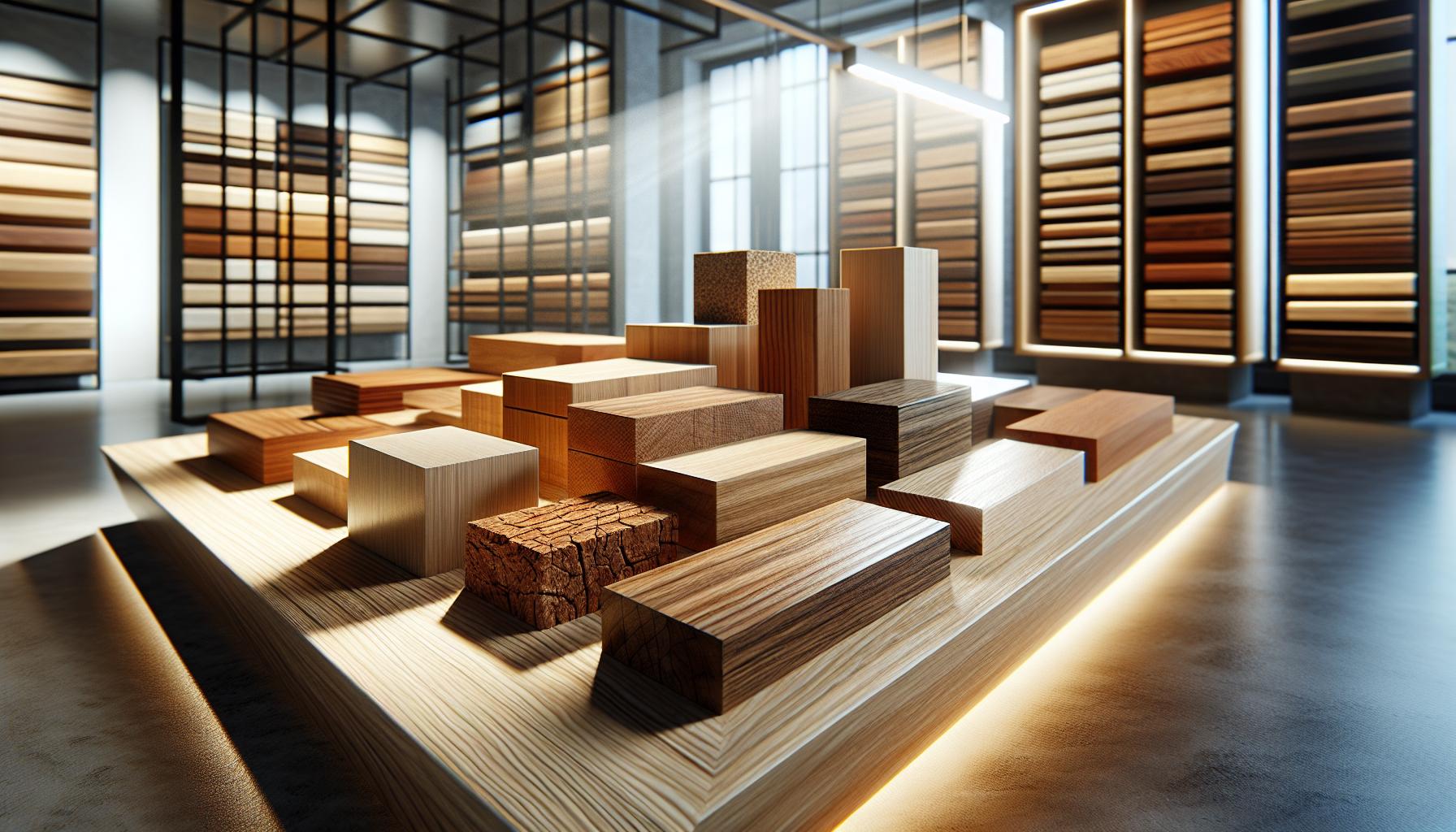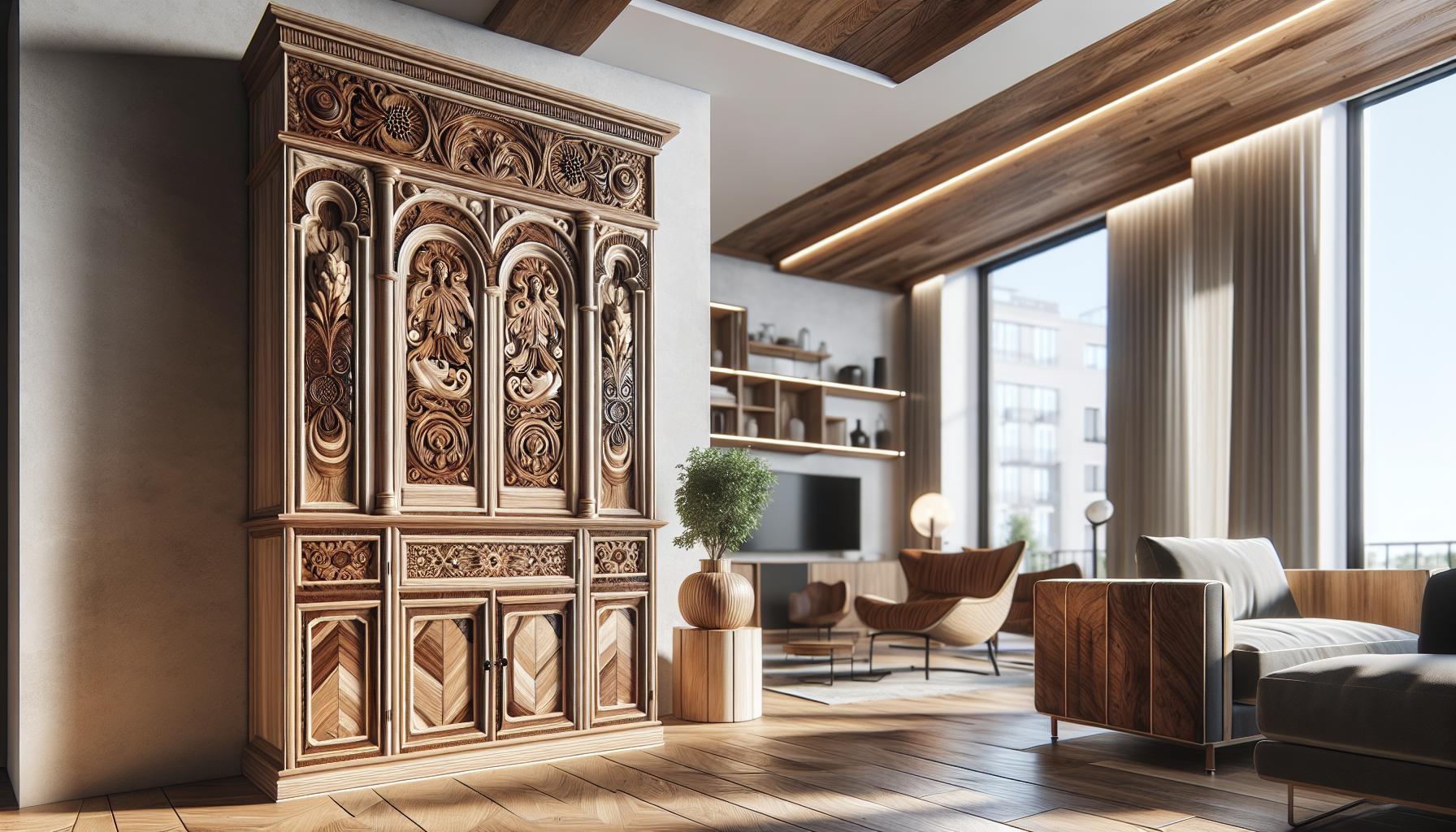When it comes to transforming a space, architectural millwork design is like the secret sauce that takes a room from drab to fab. It’s the art of crafting custom woodwork that not only enhances aesthetics but also elevates functionality. Think of it as the icing on the cake—without it, your design might just be a plain old muffin.
Architectural Millwork Design
Architectural millwork design encompasses the detailed and skillful creation of wooden features in architectural spaces. It serves to enhance both the visual appeal and usability of environments. Custom cabinetry, moldings, and paneling often reflect the unique style of a space while ensuring functional needs are met.
Designers utilize various types of wood, each offering distinct characteristics and finishes. Oak, maple, and cherry represent popular choices, providing durability and elegance for different applications. This diversity allows for a broad spectrum of designs, making it easy to tailor millwork to specific themes or aesthetics.
Precision in architectural millwork design reflects craftsmanship. Skilled artisans ensure that every piece fits seamlessly within a space. Attention to detail enhances the overall quality, contributing to the longevity and visual impact of the installation.
Installation plays a crucial role in the effectiveness of millwork. Properly executed installations lead to a stronger connection between the architectural elements and the surrounding environment. Well-fitted components not only look better but also support structural integrity.
Architectural millwork design significantly affects the ambiance of a room. Thoughtful incorporation of custom pieces can define areas within an open concept layout or provide necessary storage solutions. Such design choices ensure each space functions optimally while maintaining aesthetic consistency.
Effective collaboration between designers and clients fosters innovative millwork solutions. Engaging in open dialogue facilitates a shared vision. Emphasizing uniqueness in design captures personal style, making the final product a true reflection of individual preferences.
Key Elements of Architectural Millwork Design

Architectural millwork design centers on essential components that elevate spaces. Understanding these key elements ensures effective implementations.
Wood Types and Materials
Various wood types and materials play a significant role in architectural millwork design. Oak, known for its strength, suits traditional styles. Maple offers a lighter hue and smooth finish, perfect for contemporary settings. Cherry wood, with its rich color, enhances warmth in any installation. Additionally, engineered wood provides cost-effective and environmentally friendly alternatives. These materials furnish functionality and aesthetic appeal across diverse projects.
Design Styles and Aesthetics
Design styles and aesthetics directly influence millwork outcomes. Traditional designs feature ornate moldings and intricate details that add character. Conversely, modern aesthetics emphasize clean lines and minimalism. Transitional styles bridge the gap, combining elements from both traditional and contemporary designs. Each unique choice enhances overall space, aligning with the desired atmosphere. Effective integration of these styles results in visually stunning environments that reflect individual taste and functionality.
Importance of Architectural Millwork Design

Architectural millwork design plays a critical role in transforming spaces by enhancing both functionality and aesthetics. Custom woodwork creates unique features that improve the overall experience of a room.
Enhancing Functionality
Functionality benefits significantly from architectural millwork design. Custom cabinetry provides tailored storage solutions that maximize available space. Thoughtful design can incorporate shelving or compartments that cater to specific needs. Enhanced organization contributes to a seamless flow in living and working spaces. Built-in features, such as window seats or bookcases, create multi-functional areas that serve various purposes. Effective millwork can also define zones within open layouts, ensuring spaces feel cohesive and purposeful. Every piece of millwork introduces practicality, reinforcing its importance in design.
Elevating Aesthetics
Aesthetics take center stage with architectural millwork design. Each wood type, such as oak, maple, or cherry, adds distinct visual qualities that resonate with style preferences. A stunning molding or exquisite paneling transforms ordinary rooms into elegant environments. Decorative elements draw the eye and elevate the overall ambiance of the space. Design styles, ranging from traditional to modern, affect how millwork integrates with existing décor. Artful craftsmanship showcases skill and attention to detail, enhancing visual appeal. Millwork not only complements but elevates a space, creating an inviting atmosphere.
Challenges in Architectural Millwork Design

Architectural millwork design presents various challenges that can affect the final outcome. Understanding these obstacles ensures successful project execution and enhances the quality of results.
Design Limitations
Design limitations often stem from structural constraints and client requirements. Specific dimensions can restrict creativity and force adaptations. Additionally, integrating custom millwork into existing architecture complicates the design process. Depending on the chosen wood type, certain aesthetic outcomes may not achieve the desired effect. The design vision may need alteration to comply with building codes and regulations, further impacting creativity.
Installation Considerations
Installation considerations play a crucial role in achieving a polished final look. Precision is essential during the setup to ensure each piece fits correctly within the designated space. Complications arise when dealing with uneven surfaces or existing structural elements. Considerations for material shrinkage and expansion impact long-term performance and appearance. Working closely with skilled installers mitigates risks and enhances the quality of the final result. Each of these factors significantly influences the overall success of architectural millwork design.
Innovations in Architectural Millwork Design
Cutting-edge technology and design techniques redefine architectural millwork. Digital fabrication methods enable precise and intricate designs, enhancing creativity in custom woodwork projects. 3D modeling and computer-aided design software allow designers to visualize projects, ensuring alignment with client expectations before production begins.
Sustainability emerges as a key trend in recent innovations. Eco-friendly materials and practices, like reclaimed wood and low-VOC finishes, appeal to environmentally conscious consumers. Implementing sustainable strategies reduces environmental impact while delivering visually stunning spaces.
Smart millwork features incorporate technology into designs. Integrated lighting, wireless charging stations, and built-in speakers enhance functionality. These innovations not only improve usability but also contribute to a seamless aesthetic in modern interiors.
Collaborative design processes drive creativity. Engaging with clients from project inception encourages personalized solutions that reflect individual styles. This approach results in truly unique architectural millwork that resonates with the inhabitants of the space.
Architectural styles continuously evolve, influencing millwork trends. Minimalism and biophilic design principles generate interest in streamlined cabinetry and natural elements. Incorporating clean lines and organic materials establishes a harmonious balance between functionality and aesthetics.
Lastly, the rise of modular designs offers versatility. Modular components facilitate easy customization and adaptability in various spaces. Whether in residential or commercial environments, these innovations enable designers to cater to diverse needs and preferences.
Architectural millwork design is integral to creating spaces that are not only functional but also visually captivating. By incorporating custom woodwork elements, designers can elevate a room’s atmosphere while addressing specific client needs. The careful selection of materials and styles plays a pivotal role in achieving a cohesive look that reflects individual preferences.
As technology advances and sustainability becomes increasingly important, the field of millwork continues to evolve. Embracing innovative techniques and eco-friendly practices ensures that architectural millwork remains relevant and impactful. Ultimately, the collaboration between designers and clients is key to unlocking the full potential of millwork, transforming ordinary environments into extraordinary ones.



